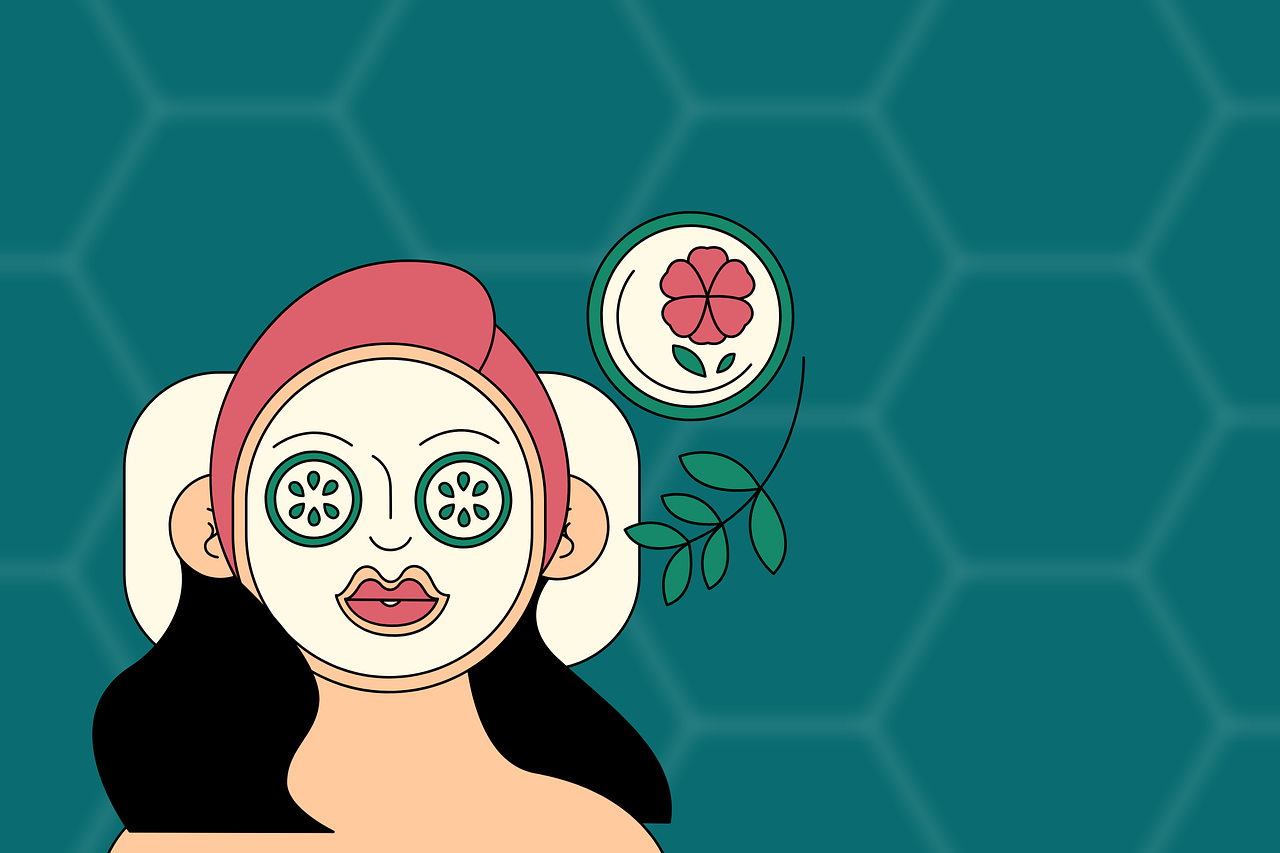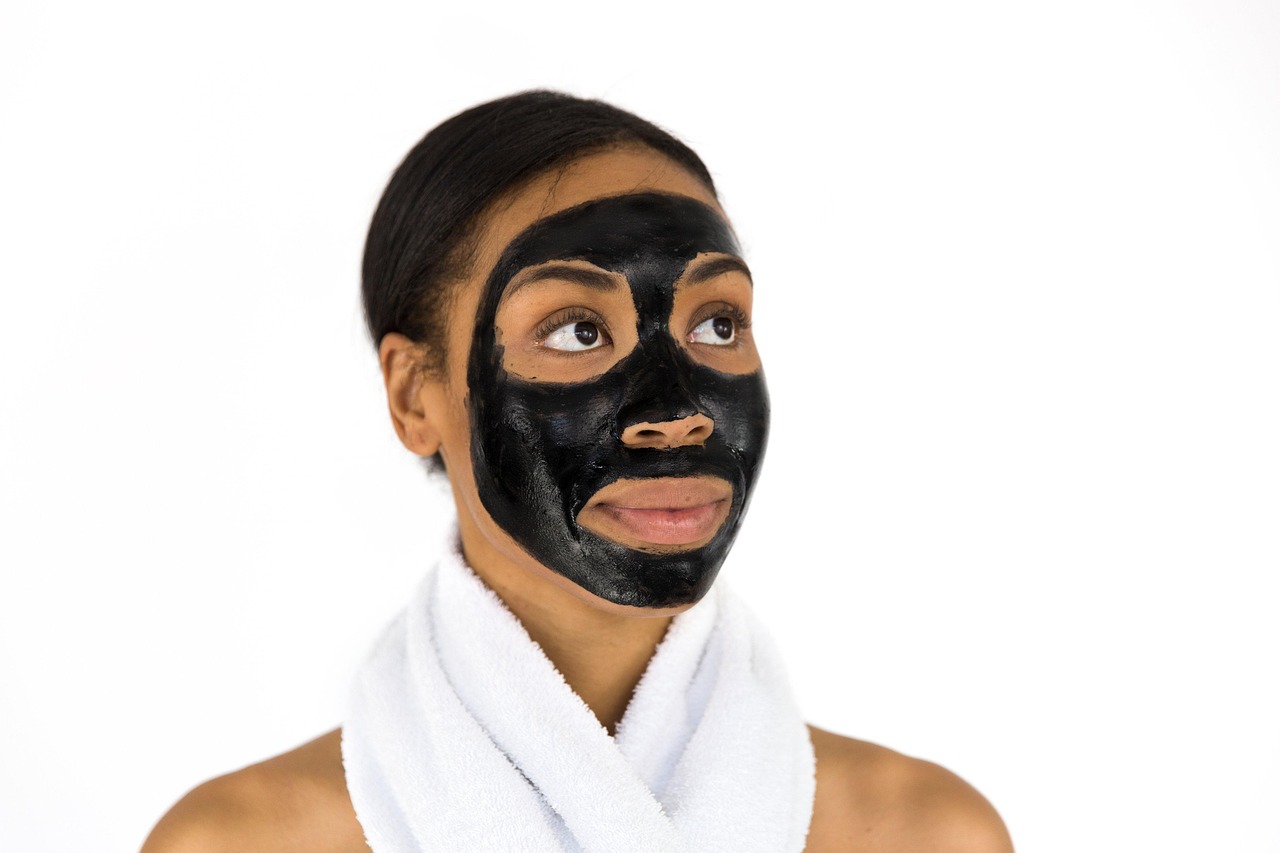Creating DIY natural face masks for every skin type has become a popular skincare trend that combines effectiveness with affordability. These homemade treatments offer a personalized approach to skincare, allowing you to address specific concerns while knowing exactly what ingredients touch your skin. Whether you’re dealing with dryness, excess oil, or sensitivity, natural ingredients from your kitchen can provide targeted solutions for healthier, more radiant skin.
Why Choose DIY Natural Face Masks?
Natural face masks offer significant advantages over commercial alternatives, providing eco-friendly, cost-effective, and ingredient-safe benefits. By creating your own masks, you eliminate exposure to harsh chemicals, synthetic fragrances, and preservatives that can irritate sensitive skin while reducing packaging waste and supporting sustainable beauty practices.
Cost-Savings & Sustainability
Kitchen-sourced ingredients make DIY masks incredibly budget-friendly compared to expensive spa treatments or high-end skincare products. Most natural mask ingredients cost a fraction of commercial alternatives while delivering comparable results.
Benefits of DIY natural masks include:
- Utilizing ingredients already in your pantry
- Reducing plastic packaging waste
- Supporting local agriculture when buying fresh ingredients
- Creating multiple treatments for the cost of one store-bought mask
- Zero harmful chemicals or synthetic additives
- Customizable formulations for specific skin needs
Ingredient Control & Safety
When making DIY natural face masks, you maintain complete control over every ingredient, avoiding potential allergens, preservatives, and harsh chemicals found in commercial products. This transparency is particularly valuable for those with sensitive skin or specific allergies. Always perform a patch test on a small area of skin 24 hours before applying any new mask to your face, checking for redness, itching, or irritation.
Understanding Skin Types & Their Needs
Identifying your skin type is crucial for selecting the most effective natural ingredients and mask formulations. Each skin type has unique characteristics and requires specific care to maintain optimal health and appearance.
| Skin Type | Primary Concerns | Key Needs | Best Natural Ingredients |
|---|---|---|---|
| Dry | Flaking, tightness, dullness | Deep hydration, nourishment | Avocado, honey, oils |
| Oily/Acne-Prone | Excess sebum, enlarged pores, breakouts | Oil control, pore-clearing | Clay, charcoal, tea tree |
| Combination | Oily T-zone, dry cheeks | Balanced treatment | Banana, yogurt, gentle clays |
| Sensitive | Redness, irritation, reactivity | Soothing, gentle care | Oatmeal, aloe vera, cucumber |
| Normal | Occasional minor issues | Maintenance, glow enhancement | Honey, yogurt, mild fruits |
Dry Skin
Dry skin typically feels tight, appears flaky, and may show signs of premature aging due to lack of moisture. These skin types require deep hydration and nourishing ingredients that restore the skin’s natural barrier function while providing essential fatty acids and vitamins.
Oily & Acne-Prone Skin
Oily skin produces excess sebum, leading to enlarged pores, blackheads, and frequent breakouts. This skin type benefits from ingredients that provide oil control, antimicrobial properties, and gentle exfoliation without over-drying, which can actually trigger increased oil production.
Combination Skin
Combination skin features an oily T-zone (forehead, nose, chin) with normal to dry cheeks, requiring a balanced approach that addresses both concerns simultaneously. The key is using ingredients that regulate oil production while providing adequate moisture to drier areas.
Sensitive & Reactive Skin
Sensitive skin reacts easily to environmental factors, fragrances, and harsh ingredients, often showing redness, burning, or stinging sensations. This skin type requires gentle, calming ingredients with anti-inflammatory properties that soothe irritation while strengthening the skin barrier.
Normal Skin
Normal skin maintains good balance with minimal concerns, requiring maintenance-focused treatments that preserve healthy function while enhancing natural radiance. This skin type can tolerate a wider range of ingredients and benefits from preventive care.
Best Ingredients for DIY Masks

Understanding the properties of natural ingredients helps you create effective masks tailored to your specific skin needs. These powerhouse ingredients offer multiple benefits and can be combined in various ways to address different concerns.
Top natural mask ingredients and their benefits:
- Honey – Natural humectant and antimicrobial agent
- Avocado – Rich in healthy fats and vitamins A, D, E
- Oatmeal – Gentle exfoliant with anti-inflammatory properties
- Greek yogurt – Contains lactic acid for gentle exfoliation
- Clay – Absorbs excess oil and draws out impurities
- Aloe vera – Soothes inflammation and provides hydration
- Turmeric – Anti-inflammatory and brightening properties
- Cucumber – Cooling and hydrating with vitamin C
Honey
Raw honey serves as both an antibacterial agent and natural humectant, drawing moisture from the environment into your skin. It’s suitable for most skin types, particularly beneficial for acne-prone, dry, and sensitive skin due to its gentle yet effective properties.
Avocado & Oils
Avocado contains healthy monounsaturated fats and vitamins that deeply nourish dry, mature skin. Popular oils for DIY masks include jojoba oil (mimics skin’s natural sebum), argan oil (rich in vitamin E), and coconut oil (antimicrobial properties), though coconut oil may clog pores for some individuals.
Oatmeal & Yogurt
Colloidal oatmeal provides gentle exfoliation while soothing irritated skin, making it ideal for sensitive skin types. Plain Greek yogurt contains natural lactic acid that gently dissolves dead skin cells while probiotics may support skin health.
Clay, Charcoal & Turmeric
Bentonite and kaolin clays absorb excess oil and impurities, making them excellent for oily skin. Activated charcoal offers similar benefits with additional detoxifying properties. Turmeric provides anti-inflammatory and brightening benefits but may temporarily stain skin yellow.
DIY Recipes by Skin Type
These carefully formulated recipes address specific skin concerns using natural ingredients. Always perform a patch test before trying new recipes, and prepare masks fresh for each use to prevent bacterial contamination.
Hydrating Avocado & Honey Mask (Dry Skin)
This intensely moisturizing mask combines nourishing fats with humectant properties for deeply hydrated skin.
Ingredients:
- 1/2 ripe avocado
- 2 tablespoons raw honey
- 1 teaspoon olive oil (optional)
Instructions:
- Mash avocado until completely smooth
- Mix in honey and olive oil until well combined
- Apply thick layer to clean skin, avoiding eye area
- Leave on for 15-20 minutes
- Rinse with lukewarm water and pat dry
- Follow with moisturizer
Clay & Tea-Tree Mask (Oily/Acne-Prone Skin)
This purifying mask controls oil production while fighting acne-causing bacteria.
Ingredients:
- 2 tablespoons bentonite clay
- 3-4 tablespoons water or rose water
- 2 drops tea tree oil
Instructions:
- Mix clay with liquid until smooth paste forms
- Add tea tree oil and blend thoroughly
- Apply even layer to clean skin
- Allow to dry for 10-15 minutes (don’t let it crack)
- Rinse with cool water
- Caution: Don’t over-dry; moisturize afterward
Banana & Honey + Lemon Mask (Combination Skin)
This balanced mask moisturizes dry areas while gently controlling oil in the T-zone.
Ingredients:
- 1/2 ripe banana
- 1 tablespoon honey
- 1 teaspoon fresh lemon juice
Instructions:
- Mash banana until smooth
- Stir in honey and lemon juice
- Apply to clean face, focusing on problem areas
- Leave for 15 minutes
- Rinse with warm water
- Apply appropriate moisturizer
Oatmeal & Yogurt Mask (Sensitive Skin)
This gentle, soothing mask calms irritation while providing mild exfoliation.
Ingredients:
- 1/4 cup ground oats
- 2 tablespoons plain Greek yogurt
- 1 teaspoon honey
Instructions:
- Grind oats into fine powder
- Mix with yogurt and honey
- Apply gently to clean skin
- Leave for 10-15 minutes
- Rinse with cool water using gentle circular motions
- Pat dry and moisturize
Cucumber & Aloe Mask (Normal Skin & Soothing)
This refreshing mask maintains skin balance while providing hydration and cooling relief.
Ingredients:
- 1/2 cucumber, peeled
- 2 tablespoons fresh aloe vera gel
- 1 teaspoon honey
Instructions:
- Blend cucumber until smooth
- Strain out excess liquid
- Mix cucumber pulp with aloe vera and honey
- Apply to clean face
- Relax for 15-20 minutes
- Rinse with cool water
Tips for Safe, Effective DIY Mask Use

Proper application and safety practices ensure you get maximum benefits from your DIY natural face masks while avoiding potential adverse reactions. Following these guidelines helps prevent irritation and promotes healthy skin.
Always Perform a Patch Test
Before applying any new mask to your face, test a small amount on your inner wrist or behind your ear. Wait 24 hours to check for redness, itching, swelling, or burning sensations. This simple step prevents potentially severe reactions on your facial skin.
Proper Mixing & Single-Use Rule
Always prepare fresh masks for each use rather than storing leftovers. Natural ingredients lack preservatives, making them prone to bacterial growth that can cause infections or breakouts. Mix ingredients in clean bowls using clean utensils, and discard any unused portions immediately after application.
Frequency & Skin Response
Use DIY masks 1-2 times per week initially, adjusting frequency based on your skin’s response. Signs to discontinue use include persistent redness, increased breakouts, excessive dryness, or any discomfort. Your skin may need time to adjust to new ingredients.
Post-Mask Care & Sunscreen
After removing masks, apply a gentle moisturizer to lock in hydration and restore the skin barrier. Some ingredients like lemon juice or certain acids can increase photosensitivity, making daily SPF application essential to prevent sun damage and hyperpigmentation.
Customizing & Experimenting with Recipes
Once you understand basic ingredient properties, you can modify recipes to better suit your specific needs and preferences. Start with proven combinations before experimenting with more complex formulations.
Substituting Ingredients Safely
Common ingredient substitutions allow for recipe flexibility while maintaining effectiveness:
- Honey alternatives: Maple syrup or agave (though less antibacterial)
- Yogurt substitutes: Buttermilk or sour cream for lactic acid
- Oil options: Swap jojoba for argan, sweet almond, or rosehip oil
- Clay varieties: Kaolin for sensitive skin, French green for oily skin
- Natural exfoliants: Sugar, ground almonds, or rice powder instead of oats
Layering Masks & Multi-Step Routines
For comprehensive treatment, try layering different masks or creating multi-step routines. Start with a gentle exfoliating mask, rinse thoroughly, then apply a hydrating or treatment mask. This approach allows you to address multiple concerns in one session.
FAQ: DIY Natural Face Masks
These common questions address practical concerns about creating and using homemade face masks safely and effectively.
Can I use store-bought yogurt or honey?
Yes, but choose plain, unsweetened yogurt with live cultures for maximum benefit. Raw, unprocessed honey offers superior antibacterial properties compared to processed honey, though both provide moisturizing benefits. Avoid flavored or sweetened varieties that may irritate skin.
What if I get irritation?
Remove the mask immediately if you experience burning, stinging, or severe redness. Rinse thoroughly with cool water and apply a gentle, fragrance-free moisturizer. If irritation persists beyond a few hours or worsens, consult a dermatologist. Always patch test new ingredients.
How long before I see results?
Most people notice immediate softening and hydration after the first use, while deeper improvements like reduced breakouts or enhanced glow typically appear after 3-4 consistent applications. Be patient and consistent, as natural ingredients work gradually compared to chemical treatments.
Conclusion
DIY natural face masks for every skin type offer an accessible, affordable way to address specific skincare concerns while maintaining control over ingredients. From hydrating avocado masks for dry skin to purifying clay treatments for oily complexions, natural ingredients provide effective solutions when used safely and consistently. Remember to identify your skin type, perform patch tests, and start with proven recipes before experimenting. With regular use and proper safety practices, these homemade treatments can significantly improve your skin’s health and appearance while supporting sustainable beauty practices. For additional information on natural skincare ingredients and their benefits, consult resources like the American Academy of Dermatology for evidence-based skincare guidance.

